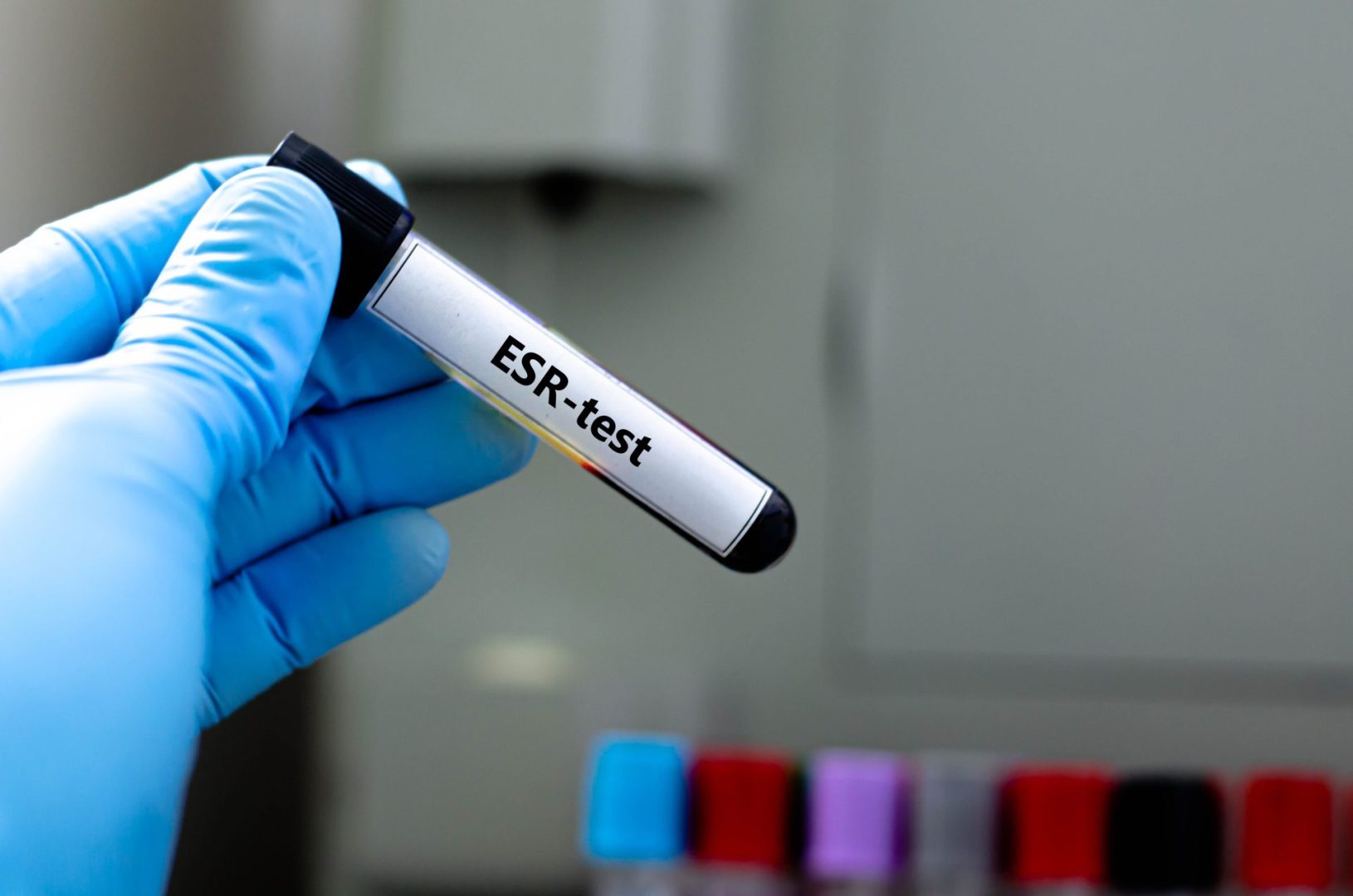Understanding how your red blood cells settle can uncover hidden inflammation that might signal underlying conditions requiring attention
What the ESR test actually measures
The erythrocyte sedimentation rate test observes how quickly red blood cells fall to the bottom of a test tube. During normal circumstances, these cells descend slowly through the plasma. However, certain proteins released during inflammation cause the cells to stick together, making them heavier and causing them to fall faster. This increased sedimentation rate serves as a reliable marker for inflammatory processes occurring somewhere in the body.
While not specific to any particular condition, the ESR test functions as an important screening tool that alerts healthcare providers to investigate further. The beauty of this test lies in its simplicity – it requires minimal equipment yet provides valuable information about overall inflammatory status.
Why doctors recommend ESR testing
Healthcare providers typically order ESR tests when they suspect inflammation might be causing unexplained symptoms. The test proves particularly valuable when monitoring inflammatory conditions over time, as changing ESR values can indicate whether treatment approaches are working effectively.
Common scenarios where an ESR test becomes relevant include unexplained fever lasting more than a week, persistent joint pain, symptoms suggesting temporal arteritis, polymyalgia rheumatica, or when tracking disease activity in conditions like rheumatoid arthritis. The test also helps differentiate between inflammatory and non-inflammatory causes of various symptoms.
Many rheumatologists and primary care physicians use ESR values alongside other inflammatory markers like C-reactive protein (CRP) to gain a more complete picture of inflammatory status. While ESR rises and falls more slowly than CRP, this gradual change makes it excellent for monitoring chronic conditions.
Key symptoms that prompt ESR testing
Certain symptoms frequently lead healthcare providers to order an ESR test. These include:
Persistent fatigue that seems disproportionate to activity levels and fails to improve with rest
Joint pain and stiffness, particularly when most noticeable in the morning and improving with movement throughout the day
Unexplained weight loss occurring without intentional dietary changes or increased exercise
Recurring fevers without obvious infectious causes
General malaise and a persistent feeling of being unwell
Muscle aches that seem disconnected from physical exertion
Headaches that follow unusual patterns or fail to respond to typical treatments
These symptoms, especially when occurring together, may indicate systemic inflammation that an ESR test can help quantify. The test provides objective data to complement subjective symptom reporting.
The testing experience
Getting an ESR test requires minimal preparation, making it convenient for most patients. Unlike many other blood tests, fasting typically isn’t necessary before an ESR test. However, certain medications can affect results, so inform your provider about all medications you take regularly.
The blood collection process takes just minutes and involves standard venipuncture. A healthcare professional will clean the inside of your elbow with antiseptic, apply a tourniquet to make veins more visible, insert a small needle and collect the blood sample, remove the needle and apply pressure with a cotton ball, then secure the area with an adhesive bandage.
Most people experience only momentary discomfort during the blood draw. The collected sample goes to a laboratory where technicians place it in a specialized tube marked with measurement scales. They then observe how far the red blood cells fall within a specific timeframe, usually one hour.
After your ESR test
Following the blood draw, normal activities can generally resume immediately. Some patients experience minor bruising at the puncture site, which typically resolves within days. If you notice excessive bleeding, severe bruising, or signs of infection like redness or warmth, contact your healthcare provider.
Depending on the laboratory and your healthcare system, results typically become available within 24-72 hours. Many healthcare facilities now provide electronic access to test results through patient portals, making it easier to track your health information.
Understanding your ESR results
ESR results appear as a measurement in millimeters per hour (mm/hr), representing how far red blood cells fall in one hour. Normal ranges vary significantly based on age and sex:
Men under 50: 0-15 mm/hr
Women under 50: 0-20 mm/hr
Men over 50: 0-20 mm/hr
Women over 50: 0-30 mm/hr
Children: 0-10 mm/hr
These ranges reflect the natural variations in blood composition between different demographic groups. Women typically have higher baseline ESR values than men, and older individuals generally have higher values than younger people.
What elevated ESR levels might indicate
An ESR above the normal range suggests inflammation, but doesn’t identify its source. Common conditions associated with elevated ESR include:
Inflammatory arthritis such as rheumatoid arthritis, where joint inflammation causes characteristic morning stiffness
Infections ranging from localized abscesses to systemic conditions like endocarditis
Autoimmune disorders including lupus, vasculitis, and inflammatory bowel disease
Certain cancers particularly multiple myeloma and lymphomas
Temporal arteritis which can cause headaches and vision problems
Polymyalgia rheumatica characterized by muscle pain and stiffness in the shoulders and hips
Kidney diseases including glomerulonephritis
The degree of elevation often correlates with disease severity. Very high levels (above 100 mm/hr) generally indicate serious conditions requiring prompt attention.
Factors affecting ESR results
Several factors can influence ESR results independently of inflammatory status:
Pregnancy naturally elevates ESR values
Anemia can cause increased readings
Age tends to increase baseline ESR levels
Menstruation may temporarily raise values
Medications including oral contraceptives and vitamin A can affect results
Recent food intake sometimes influences readings
Abnormal red blood cell shapes can alter how cells settle
These factors highlight why ESR results must always be interpreted within the context of the complete clinical picture. A single elevated reading rarely justifies diagnosis or treatment changes without supporting evidence.
Low ESR values and their significance
While attention typically focuses on elevated ESR results, abnormally low values occasionally indicate underlying issues:
Polycythemia where excess red blood cells slow sedimentation
Sickle cell anemia due to abnormally shaped cells
Leukocytosis with extremely high white blood cell counts
Hypofibrinogenemia involving low levels of fibrinogen, a clotting protein
Severe liver disease affecting protein production
Low ESR values rarely require intervention specifically for the ESR finding but may help diagnose these underlying conditions when other clinical evidence points in their direction.
ESR versus other inflammatory markers
The ESR test remains relevant despite newer inflammatory markers because of its established track record and widespread availability. However, understanding its relationship to other tests helps contextualize its value:
C-reactive protein (CRP) responds more quickly to inflammation changes than ESR, making it better for tracking acute conditions
Plasma viscosity offers similar information but with less variability
Ferritin functions both as an iron storage marker and an acute phase reactant
Procalcitonin helps distinguish bacterial from viral infections
Many healthcare providers order multiple inflammatory markers simultaneously to gain comprehensive insight into inflammatory processes. The ESR and CRP complement each other particularly well, with CRP reflecting immediate changes while ESR provides a more averaged view of inflammation over time.
When to discuss ESR results with your doctor
Always review abnormal test results with your healthcare provider rather than attempting self-interpretation. Schedule a follow-up appointment if: Your ESR result falls outside the normal range; Your symptoms persist or worsen despite normal results; You experience new symptoms after testing and; You have questions about how the results impact your treatment plan
Remember that the ESR test serves as a screening tool rather than a diagnostic one. Additional testing almost always follows an abnormal ESR before definitive diagnoses can be established.
The erythrocyte sedimentation rate test, though simple in concept, provides valuable insights into inflammatory processes throughout the body. When interpreted alongside clinical findings and other laboratory tests, it helps guide diagnosis and treatment for numerous inflammatory conditions.















